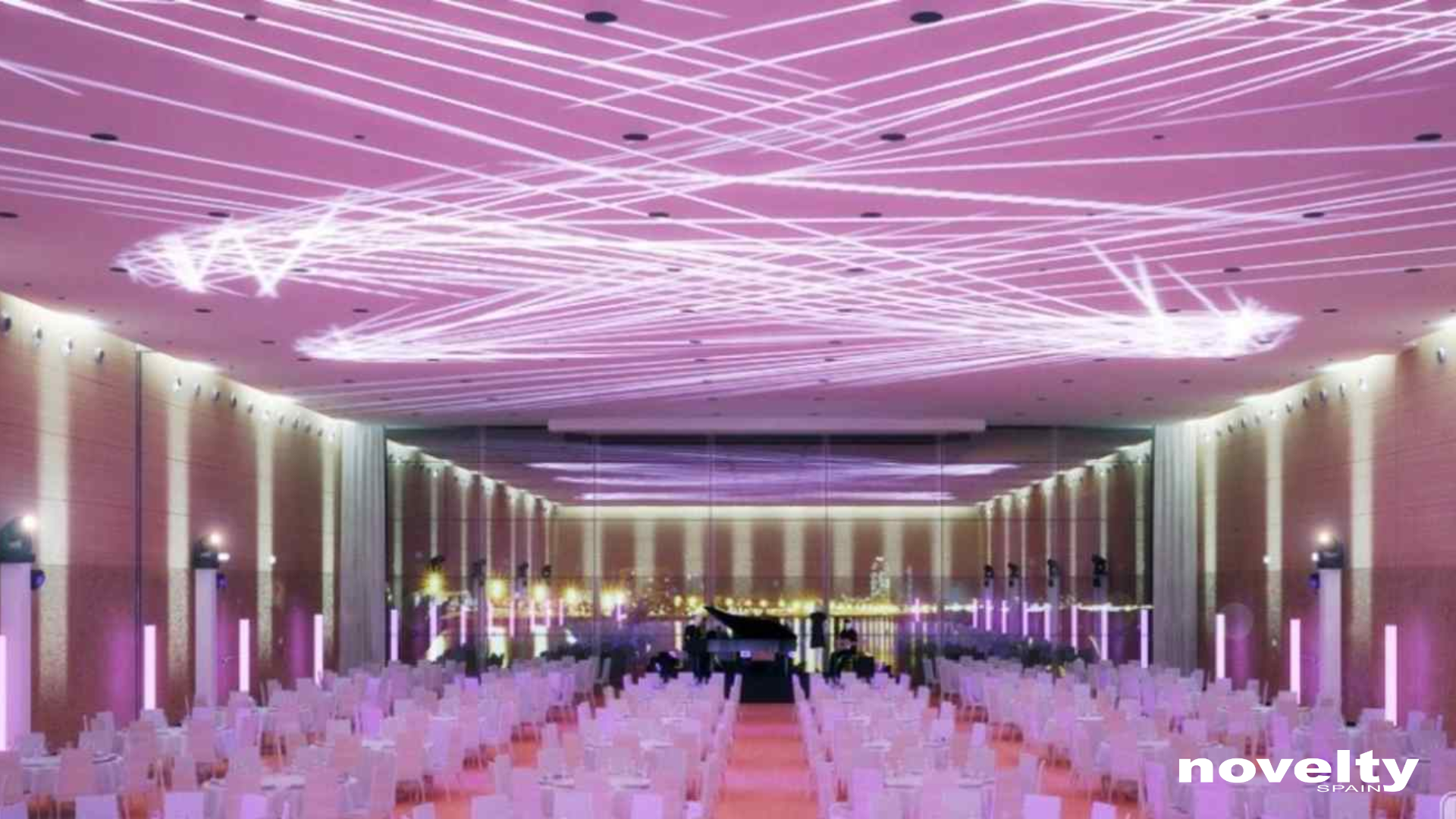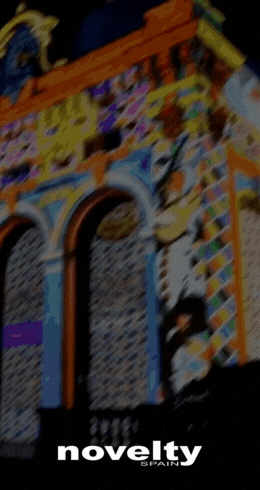Dushow Spain is now Novelty Spain
What is a gobo, and how to use one at your event?
Long before anyone asked what a gobo is, or how to use one at an event, our ancestors were already practising this same storytelling technique; using their hands or other objects to project shadows over a surface.
But times have changed, and now this simple technique is used for many purposes in the world of lighting.
In this article, we’ll define what gobos are, their possibilities and how to use them at your event.
What is a gobo?
A gobo is a metal or glass panel with a shape cut out of it, placed in front of a light source. Positioned between the light source and a surface, it works as a filter, allowing the light rays to project in the desired shape onto a surface.
Gobos can be used with static light sources, such as cut-outs for a fixed position, or in spotlight-type moving heads to have dynamic lighting and the possibility to add effects.
Here’s an easy way to remember what a gobo is: think of the bat-signal shown in Batman films and comics. It’s the projection of a circular light shining in the sky featuring a dark cut-out Batman logo.
The name of comes from the English phrase “goes before optics”, which refers to the position where these elements are placed inside a light projection unit or lamp.
Gobo Types
Now that we have defined what a gobo is, you need to know which kinds there are, and how they differ from one another:
- Metal gobos: the most affordable kind, made out of sheet steel. They are made by applying a die to a very thin layer of metal. Though once made by hand, they are currently manufactured with laser cutters.
Light passes through the cut-out sections and gets projected onto the desired surface. The projection can be white, or made into any solid colour by using a conventional filter. Consisting of a single layer, it doesn’t allow complex compositions or combinations of colour. Prolonged use of this type of gobo causes it to deform, and the final image to lose definition.
- Glass gobos: their price point is higher than the previous category, due to their manufacturing process. They are made of borosilicate glass, the same material whose resistance to high temperatures makes it ideal for use in laboratory test tubes, ovens, etc. Different layers can be applied using a photochemical process, giving rise to complex designs made up of several, and even faded, colours. Their composition makes them longer-lasting, but also more fragile, than metal gobos.
- Other types: The evolution of LED technology (which generates much less heat than incandescent light bulbs) has made it possible to develop new types of gobos using plastic materials.
There are two types: gobos based on the same process as the glass variety, and another less common category made in a way similar to slides.
What is a gobo good for?
Technological advancements in lighting and materials have made it possible for this technique (almost as old as shadows themselves) to become a resource that can be customized and widely used in multiple scenarios, two of the most frequent being:
- Projecting logos at any kind of event, as well as in commercial premises.
- Mapping to façades, ceilings and other surfaces with shapes and textures to provide personalized, unique ambient lighting.
Since gobos are 100% customizable, here’s just one example of what they can do: at a wedding party, project the names of the bride and groom all over the reception venue.
What are the benefits of using a gobo?
Gobos bring great added value, and are advantageous in many other ways:
They’re affordable
Once a “master” gobo has been made, copies can be made economically. Plus, a single gobo can be used on different devices, as there are standardized formats.
They’re versatile
Their simple assembly and operation makes it easy to change motifs. A single gobo equipment set-up can be used for different projections at the same event. Moving heads have capacity to store a number of gobos, enabling the user to use them at different times and even combine them, and apply different colour palettes, rotations and movements.
They can be projected over any surface
You don’t need a flat, white surface to project. The light from a gobo can reach all kinds of structures, and deck out any surface you like, generating different volumes and depths on them.
What’s more, light can even reach places that would be hard to access by other means, like ceilings, and corners.
Their range will surprise you
Though it always depends on the power of the equipment, gobo projections can be quite sizeable, and visible to a large audience, without any loss of detail.
When is it not recommendable to use a gobo?
A gobo is a static image, which at the most can move in different directions, turn or change size. But it can never change shape.
If you need a moving image, you will have to use a projector, or other techniques.
You shouldn’t use a gobo in situations in which it is possible that people or objects could get between the projector and the surface projected on, as this would cause unsightly shadows.
Day-time outdoor events, or any with high levels of light pollution are not recommendable scenarios for gobos, as their effect will be small or even lost altogether.
How should you use a gobo at your event?
Although it is a very old technique, gobos continue to amaze event audiences because of the precision, size and position of their projections.
What’s more, if plans are to monetize your event, gobos enable you to sell spaces in different venue sites that may be hard to reach through other media, such as monitors or print.
At events, gobos are generally used to project:
- Company logos
- Trademark slogans
- Event and/or sponsors’ logos
- Event hashtag
- Social media of the organizer or sponsors
- Interior decor
But don’t limit your use of gobos to just these suggestions.
Project the idea behind your event like a gobo
If you were wondering what gobos are, and whether to use one at your event, we hope this post has cleared up a few things about their potential, and hopefully, given you some ideas about how to use them at your next event!
This article was first published in Novelty Spain, you can read the original Spanish version here.





